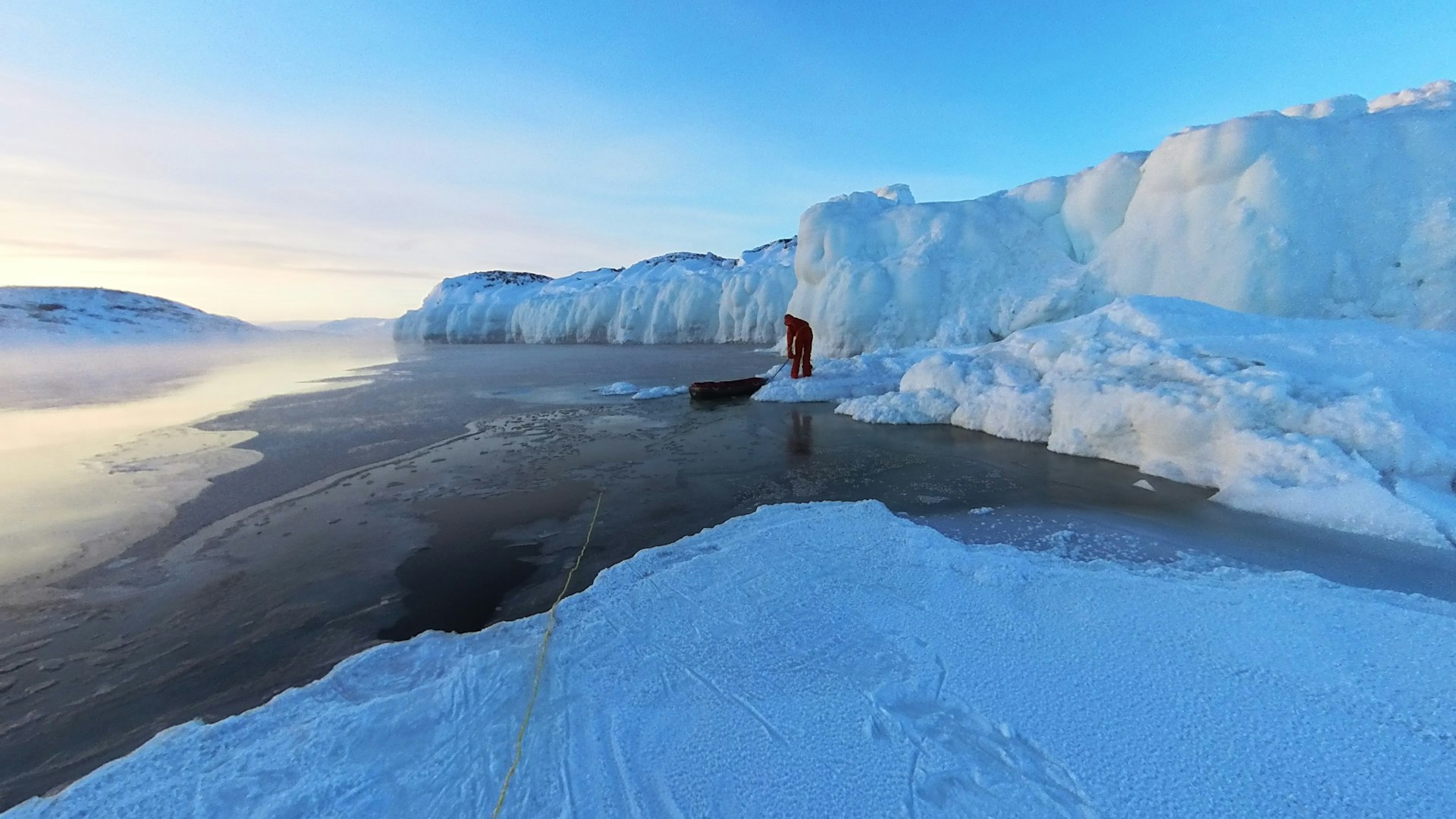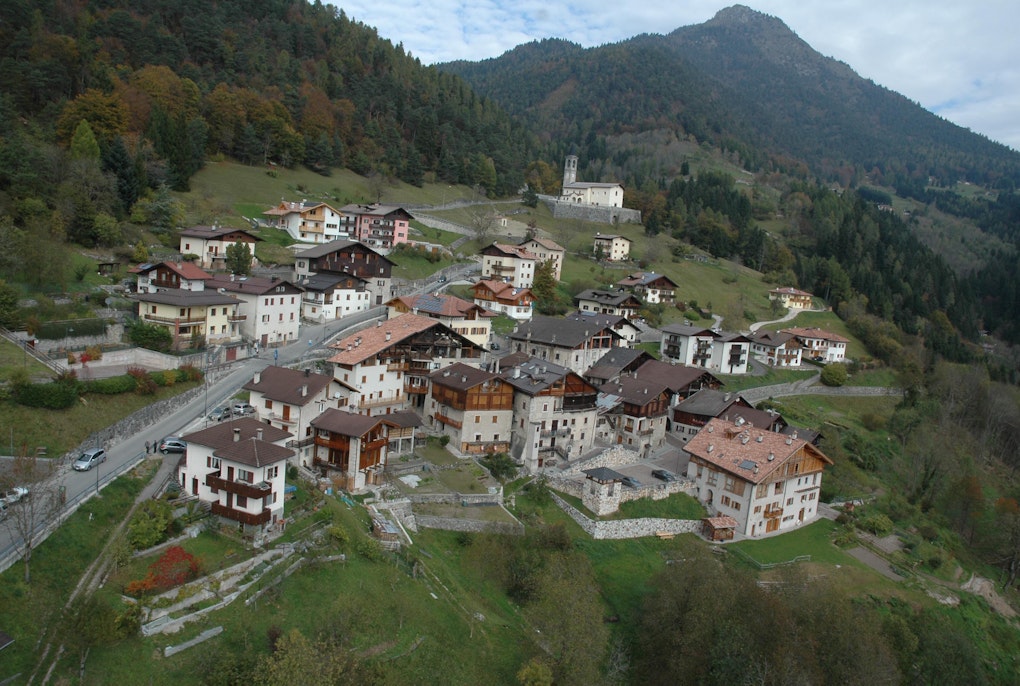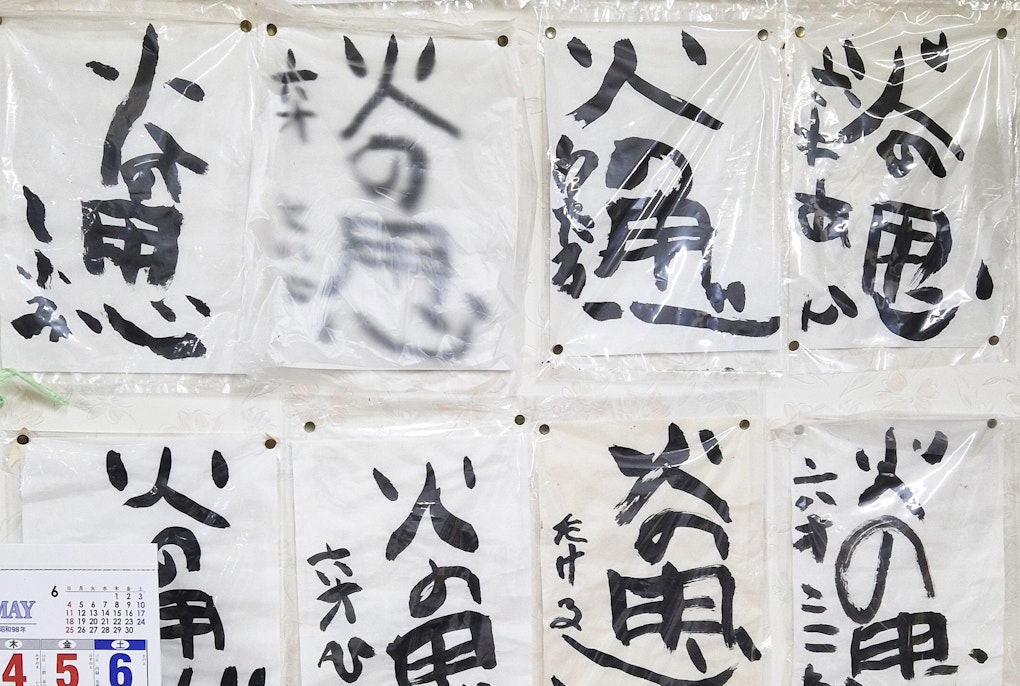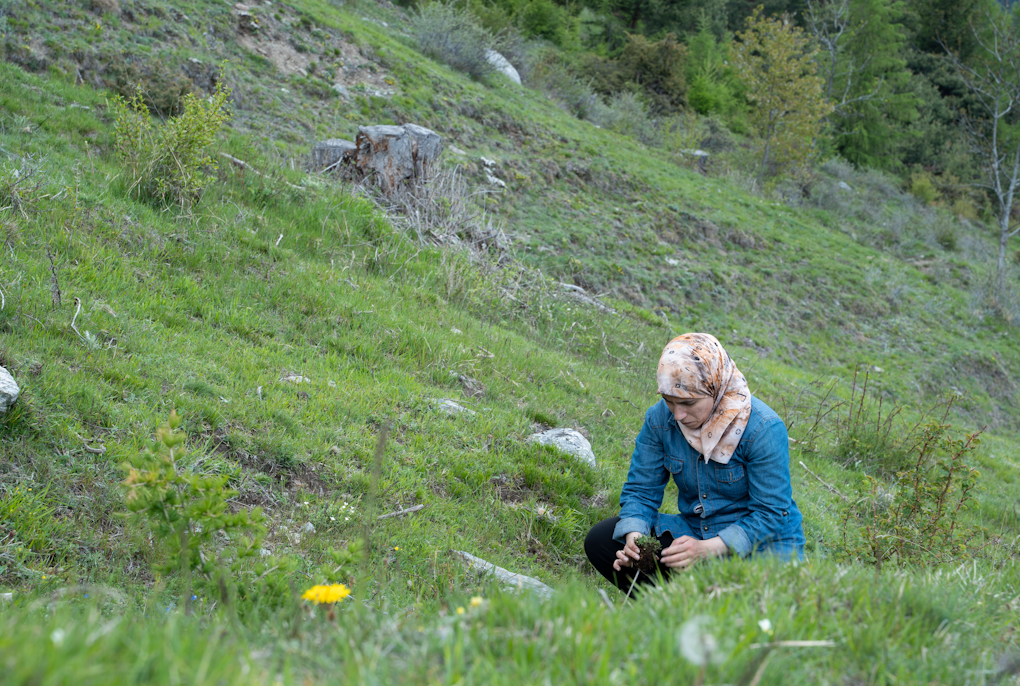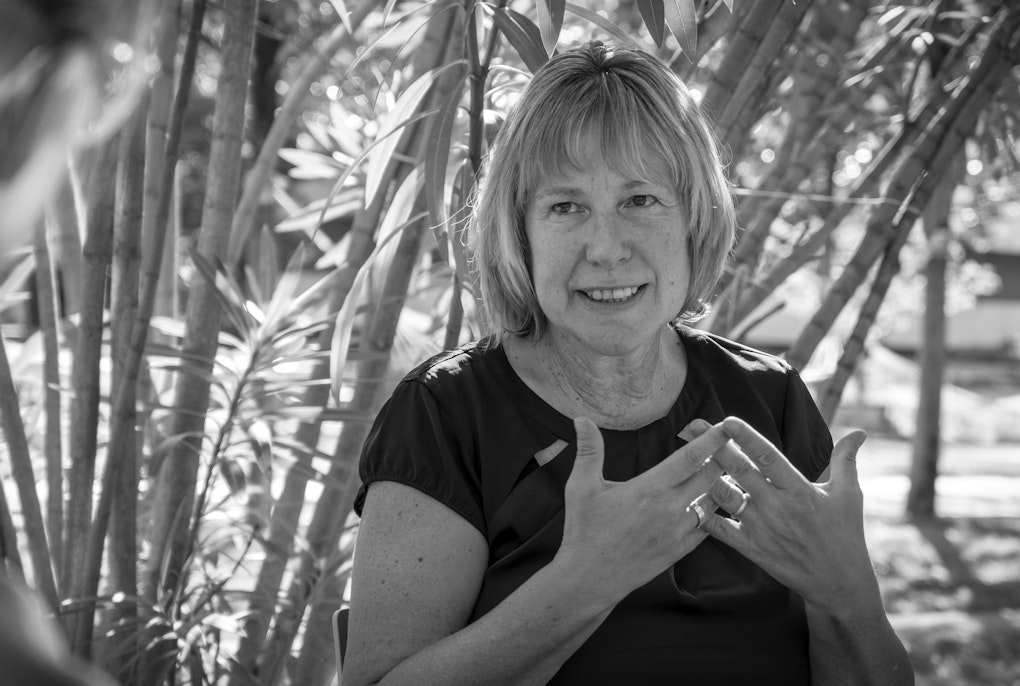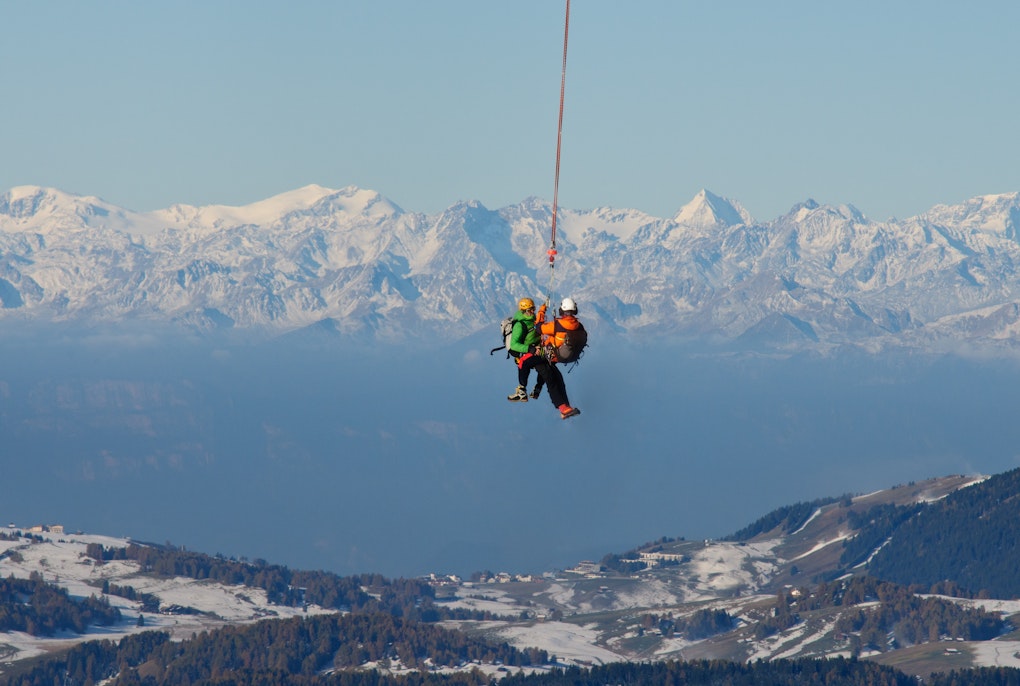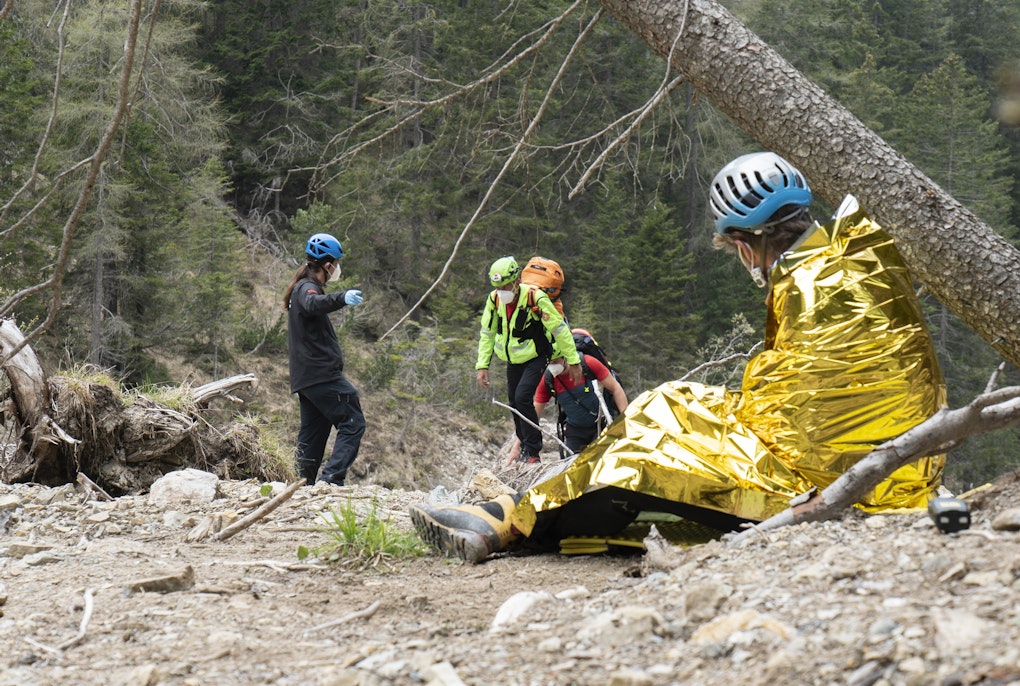magazine_ Interview
The preparation is the real adventure
Extreme sportswoman Anja Blacha and climate risk expert Stefan Schneiderbauer in conversation
In northern Canada, on their polar expedition from Cambridge Bay to Gjoa Haven.
Photo: Anja Blacha | All rights reserved
Anja Blacha breaks records on her expeditions. When it comes to analyzing climate risks in mountain regions around the world, Stefan Schneiderbauer breaks the mold for risk prevention. We invited the two of them to talk about resilience, responsibility and the allure of the unconquerable mountain.
Anja Blacha, in 2017 you were the youngest German woman to climb Everest, in the following years you conquered all Seven Summits, and in 2020 you reached the South Pole on cross-country skis, dragging a sled with everything you needed to survive for 60 days. What attracts you to these extreme adventures?
Anja Blacha: The fun. I feel good out there. It's a good balance with the office. I am not someone who likes to run in circles. I prefer to have a goal in mind to work toward. And it stimulates me to know that under those circumstances I am completely dependent on my own actions.
This awareness that our existence depends on our actions does not yet seem to be sufficiently ingrained in society when it comes to climate risk management and natural hazards. May I draw this parallel, Stefan Schneiderbauer?
Stefan Schneiderbauer: Regarding climate risk, we depend not only on our individual actions, but on a complex chain of events and decisions. Climate protection has a global dimension and climate change adaptation a regional one. However, I find Anja's statement apt at the individual level: every action has an impact. I just don’t feel it as directly in the climate context as I do in the context of the mountains or Antarctica.
Blacha: I just have to make a connection. If I know that the CO2 emissions from a flight from Germany to Spain melts two square meters of Arctic ice I think twice about flying if I want to keep walking on ice in the future.
If I know that the CO2 emissions from a flight from Germany to Spain melts two square meters of Arctic ice, I think twice about flying.
Anja Blacha
This may be true for you, but not for a couch potato.
Blacha: So here is another example, again based on my experience but which can be applied to even a couch potato – during my expedition to Antarctica, I had to carry food and fuel for 66 days. If I had put all that food, the equivalent of 576 chocolate bars, in one bag, loaded it on the sled and set off, I would not have known how much I could eat each day. In fact, I had to pack the 576 bars into 66 individual servings, to have that one less thing to think about. Now, imagine instead of all the provisions, my CO2 emissions per year were packed in one bag. How useful it would be if that were divided into portions? You’d know how often and how far you could fly, how many miles you could drive, how much meat you could eat, how long to take hot showers for, how much heating or air conditioning could be used while still being as sustainable as possible. If I could break down my CO2 emissions, consciously divide and ration them, then I’d be able to act better.
Schneiderbauer: This makes me think of Earth Overshoot Day, which is the day on which humanity fully consumes the resources produced by the planet meant for the entire year. In 2023, Germany reached this at the beginning of May. This means that in just four months Germany had used up all the natural resources it was supposed to have until the end of the year. This is shocking news as soon as you hear it, but too far removed from everyday life. If I, as an individual, were helped to calculate my impact, that would be a good thing.
If I travel to an extreme environment like Antarctica or Mount Everest most of the repetitive decisions have to be made in advance.
Anja Blacha
Anja Blacha, you spend months preparing for your expeditions. What is more stressful: preparation for an adventure or the adventure itself?
Blacha: On polar expeditions, where I am alone from day one, preparation accounts for 80 percent of the work. From the moment I leave, I only have 20 percent left to do. At that point it’s just a matter of completing the task with determination, but preparation is essential. The more prepared I am, the easier it is to implement the plan because I no longer have to make all the repetitive decisions. I no longer have to think whether I can eat more at a certain time or whether I have to walk more. Planning means I know when I have to get up and when I have to take a break. We all make about 20-25 thousand decisions a day. If I travel to an extreme environment like Antarctica or Mount Everest most of these decisions have to be made in advance. This does not mean I have to follow my plan to the letter, but good preparation gives me leeway to react properly to unforeseen events and to make changes.
How are things for you, Stefan Schneiderbauer? Are we prepared to deal with the climate crisis?
Schneiderbauer: When a specific event occurs, such as a landslide, Civil Defense obviously has its own protocols. As in an expedition, many things are checked beforehand. If all the processes and procedures are adequate you can react to the unexpected without stress, just as Anja described. In risk research it is a little different. In the future we want to focus more on prevention. Which is much more difficult because people basically don’t understand why they should invest in something that they don’t know exactly if, when and how it will happen. Maybe the argument that prevention is more economically worthwhile than disaster response will work. According to a study by the German Ministry of Climate Protection, the costs of the consequences of the climate crisis since the year 2000, amount to at least 145 billion euros. If we had invested more in prevention 20 years ago, we could have avoided a lot of expenses.
In the future we want to focus more on prevention which is much more difficult because people basically don’t understand why they should invest in something they aren’t sure is even going to happen.
Stefan Schneiderbauer
Blacha: Prevention is also important in roped expeditions in the mountains. Rope partners can’t talk about things for the first time when they’ve just arrives at an altitude of 8,000 meters above sea level. Basic planning is vital for the timing of turnarounds, what to do in case of an accident, whether to descend all together or continue, what to do if the weather changes. If we haven't made these important decisions in advance, we won’t be able to at 8,000 meters, overwhelmed by summit fever. And of course, responsibility is an important issue. Everyone in the team is responsible for pointing out the risks and taking the necessary measures.
Stefan Schneiderbauer, you study how we can make ourselves more resilient to better respond to climate disasters. What makes a society resilient?
Schneiderbauer: In addition to modern technology for example, an early warning algorithm for landslides in terms of the social component: the extent to which social networks can be relied upon in the event of an incident and the institutional component: how reliable one’s civil defense or monitoring system is in alerting them to events. But, it is also a question of trust - how much do we trust the authorities to make the right decisions?
Are rich, technologically advanced countries more likely to adapt?
Schneiderbauer: Climate change mitigation and adaptation always involve costs. But this does not mean that rich countries are more resilient. In fact, from an economic point of view they are often less so because the damage caused by a disaster in rich countries is infinitely greater. Much more can be destroyed. In addition, rich countries have often forgotten how to use nature-based methods. In mountainous areas people are much closer to natural resources and know how to manage them. They also continually deal with natural hazards and are more aware of the environment and climate. Perhaps they also have a more innovative approach.
How much innovation is there in your expeditions?
Blacha: Innovation is important for expeditions. A hundred years ago, explorers crossed Antarctica with Siberian ponies and giant, heavy wooden sleds. Did it work? Yes. Was it a good system? No. I am always looking for what I can improve. What screws I can still tighten. For me, innovating also means exploring my personal superpowers. The people who did these expeditions before me were physically very different from me. If I compared myself to them, I might as well give up. Then I look for my own special superpowers, those that allow me to face the same challenges. For example, I minimize the weight of my backpack and sled because I don't have as much strength. Or I lean on my vast network to draw on the experience of others.
How necessary is innovation in climate disaster management?
Schneiderbauer: Especially in the mountains, given the speed of climate change, it is no longer sufficient to follow standard routes. Risks are piling up, events are occurring at shorter and shorter intervals. Small steps like putting tarpaulins on the glacier to keep it from melting only achieve results in the short term and then, only selectively. Long-term sustainable change needs deep transformation processes as well as both engineering and nature-based technologies. Innovation is an absolute must.
Especially in the mountains, given the speed of climate change, long-term sustainable change needs deep transformation processes as well as both engineering and nature-based technologies.
Stefan Schneiderbauer
How do you strengthen your resilience, Anja Blacha? How do you motivate yourself to keep going when a situation seems hopeless?
Blacha: The American writer Joseph Campbell said “follow your bliss”, follow the good moments in life and everything will be fine. He later corrected it to “follow your blisters”, because everything worthwhile requires work. Blisters are the epitome of resilience, they are my buffer, the layer that protects me from more serious injuries when I stubbornly continue to pursue my goal despite friction or resistance. If I want to keep going, I am also willing to face the storm, to dodge the rocks, to endure the long days, to take on the burdens of daily life. And then, of course, I strengthen my resilience through preparation, preparation and more preparation. And through focusing on one thing, on one top priority. When I focus, I release an incredible amount of capacity.
When the mountain of complex tasks seems insurmountable, how do you motivate yourself Stefan Schneiderbauer?
Schneiderbauer: When my work seems too complex and complicated – after all, I'm always dealing with conflicts and tensions – I go to the mountain. Then I have only one goal: the summit. From there I have a good overview, which I sometimes miss in the office. When I come back with this energy and clarity, it is easier to climb the mountains of paperwork in the office.
Anja Blacha
Endurance and extreme sports athlete Anja Karen Blacha studied business administration and philosophy and worked as a manager for large international companies before focusing entirely on her expeditions. She holds several records: in 2017, she was the youngest German woman to climb Mount Everest and the youngest German to conquer all seven summits. In 2019, she was the first German woman to climb K2. In 2020, she became the first woman in the world to complete a solo and unassisted polar expedition from the coast of Antarctica to the South Pole.
Stefan Schneiderbauer
Geographer Stefan Schneiderbauer has been involved in (climate) risk management in mountain regions for more than 20 years. At Eurac Research, he manages the GLOMOS program for the UN University, which supports the conservation and sustainable development of mountain areas worldwide.
Mountain Innovation Fair 2023
Due to their remoteness, harsh environment, exposure to natural hazards, and changing climate, it has always been vital that people living in mountain areas are able maintain their livelihoods and constantly adapt to their environments and to do so, new solutions are constantly being developed and implemented. In this way, challenging living conditions have the power to become drivers of innovation. On 24-25 October, Eurac Research hosted the Mountain Innovation Fair 2023 at the NOI Techpark, with the aim of creating an interactive workspace where people from all over the world could share the challenges and successes of innovative approaches in mountain areas. The Innovation Fair was organized by the United Nations Environment Programme (UNEP) and the United Nations University as part of the UNU-EHS Global Mountain Safeguard Research (GLOMOS) Programme with financial support from the Austrian Development Cooperation (ADC).
Mountain Innovation Fair 2023
